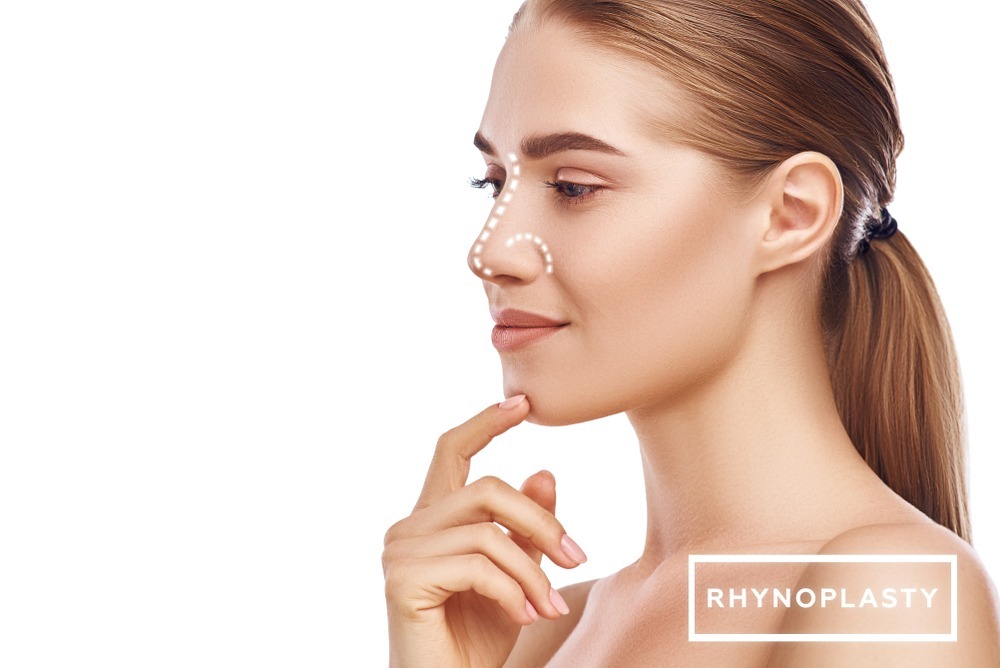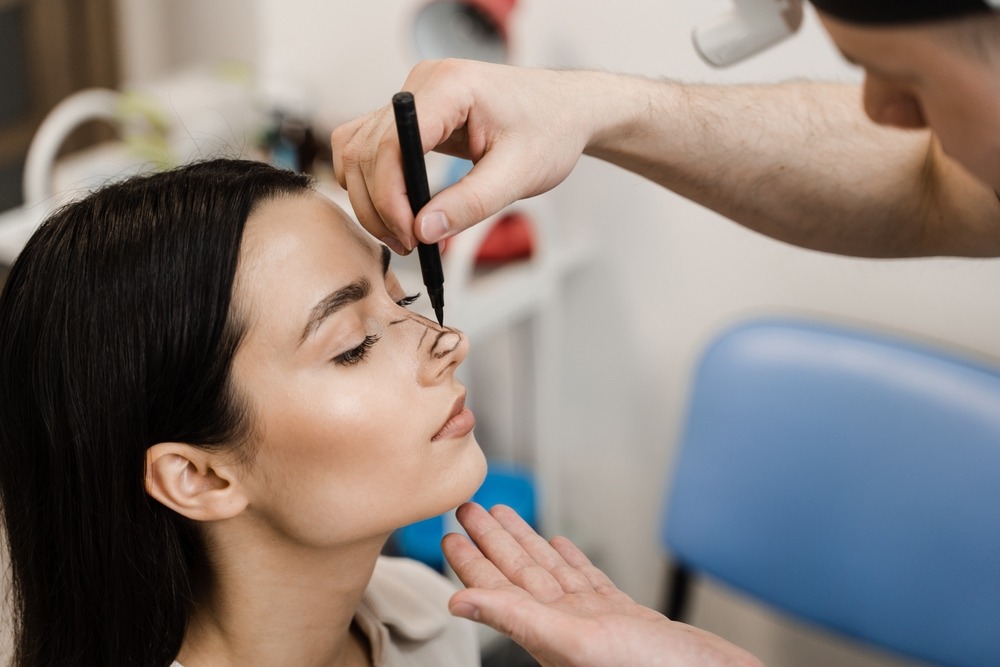Rhinoplasty
Rhinoplasty: The Basics of Getting a Nose Job

by admin
19th September 2023
7 minutes read
The world of plastic surgery offers various procedures to enhance physical appearance and improve self-confidence. One popular procedure is Rhinoplasty, colloquially referred to as a “nose job.” This blog post will provide you with an understanding of the essential elements of rhinoplasty surgery, also known as nose surgery or nose reshaping surgery. Whether it’s rhinoplasty before and after pictures that have caught your interest, or you’ve been considering this facial plastic surgery for a while, it’s important to gather as much information as you can.
What Is Rhinoplasty?
Rhinoplasty is a type of facial plastic surgery specifically targeted towards reshaping the nose. It can either be cosmetic, for improving aesthetic appearance, or reconstructive, to correct functional issues such as breathing problems.
Rhinoplasty surgery can alter the size, shape, and proportion of your nose, bringing it into better harmony with the rest of your face. It’s a complex procedure that requires the surgeon to possess a deep understanding of the underlying nasal structure, as well as a keen aesthetic sense.
Who Is a Candidate For Rhinoplasty?
Ideal candidates for rhinoplasty surgery include individuals who are dissatisfied with the size or shape of their nose, those who have breathing difficulties due to structural problems, or people who have suffered nasal injuries. It’s crucial, however, for patients to have realistic expectations about the outcome of the surgery. Remember that perfect symmetry might not be achievable, given that everyone’s face is a little asymmetrical.

The Procedure
Rhinoplasty is a complex surgery that requires significant expertise and skill. Here’s a general overview of the typical steps in a rhinoplasty procedure:
- Consultation: The first step is always a consultation with a plastic surgeon. During this meeting, the surgeon will discuss the patient’s aesthetic goals, medical history, and any potential risks or complications. They will examine the structure of the nose and face and may use computer modeling to show potential results.
- Preparation: Prior to surgery, the patient is typically asked to refrain from taking certain medications and smoking, as these can interfere with anesthesia and healing. A complete physical examination and sometimes a nasal endoscopy may be required to evaluate the nasal structure and general health.
- Anesthesia: Rhinoplasty is usually performed under general anesthesia, although local anesthesia with sedation may be used in some cases. This ensures that the patient is comfortable and pain-free during the procedure.
- Incisions: Once the patient is anesthetized, the surgeon makes the incisions. This can be done either inside the nose (closed rhinoplasty) or outside the nose across the columella (open rhinoplasty). The choice depends on the complexity of the work needed and the surgeon’s preference.
- Reshaping the Nose: Through the incisions, the surgeon can access the bone and cartilage of the nose. They may remove or rearrange this tissue to change the shape, size, or angle of the nose. If necessary, they may use cartilage from other parts of the body (like the ear or rib) or synthetic materials to provide additional support.
- Correcting a Deviated Septum: If the procedure involves correcting a deviated septum (the wall between the nostrils), the surgeon will adjust the septum and the inner structures of the nose to improve breathing.
- Closing the Incisions: Once the necessary adjustments have been made, the surgeon re-drapes the skin and tissue over the new framework and closes the incisions with sutures.
- Recovery: After the procedure, the patient’s nose may be packed or splinted to support the new shape as it heals. The patient is then taken to a recovery room where they are closely monitored as the anesthesia wears off.
- Follow-up Care: The patient will need to follow specific post-operative care instructions to ensure proper healing. This usually includes taking prescribed medications, avoiding strenuous activities, and sleeping with the head elevated. Follow-up appointments will also be scheduled so the surgeon can monitor the healing process.
The results of rhinoplasty become gradually apparent as the swelling subsides over weeks to months. The final result may not be visible for up to a year or more post-surgery.
Keep in mind that this is a general outline and the exact procedure may vary based on the individual patient’s needs and the surgeon’s techniques. Always consult with a board-certified plastic surgeon to understand the process better.
Rhinoplasty Recovery
Following the nose operation, patients usually wear a nasal splint for the first week to support the new shape of the nose as it heals. Swelling and bruising around the eyes are common but subside gradually over two to three weeks.
During the recovery period, you’ll be advised to avoid strenuous activities, use a cold compress to alleviate swelling and keep your head elevated, especially when sleeping.
Results
The final results of your nose job may not be apparent until the nose has completely healed. This might take up to a year for all the subtle changes in the nasal shape to be fully evident. Rhinoplasty before and after images can give you a sense of these changes, but keep in mind that each individual’s outcome will be unique to their initial structure and the surgeon’s technique.
Alternatives to Rhinoplasty
For those not ready to go under the knife, non-surgical alternatives like nose fillers are available. Also known as non-surgical rhinoplasty or a ‘liquid nose job,’ this procedure involves injecting dermal fillers into the nose to modify its shape subtly. The nose filler before and after changes can be quite impressive. However, it’s temporary and less versatile than surgery.
Conclusion
Undergoing a nose job is a significant decision, and understanding the procedure is crucial. It’s advisable to thoroughly research your plastic surgeon, their credentials, and expertise. Look at rhinoplasty before and after images of their past patients and discuss your expectations and concerns in detail during your consultation.
On the right hand, rhinoplasty surgery can improve not only your facial aesthetics but also enhance your self-confidence. Whether it’s a nose lift you desire, or you wish to fix functional issues, this facial procedure might be the solution you seek.
However, it’s important to remember that the goal of any plastic surgery, including rhinoplasty, should be to enhance your features while maintaining a natural look. After all, every nose is unique and contributes to the character and authenticity of your face.
How Can Medfin Help?
Certainly! Medfin connects you with top doctors and surgeons in with over 10 years of experience, ensuring a hassle-free experience for Rhinoplasty. you can concentrate on your health and achieve the aesthetic results you desire. Trust Medfin for a smooth and stress-free journey toward your Rhinoplasty goals.
FAQ’s
Yes, rhinoplasty can be used to correct structural issues that obstruct breathing, such as a deviated septum.
Like any surgical procedure, rhinoplasty carries risks, including infection, bleeding, adverse reaction to anesthesia, and dissatisfaction with cosmetic results. Specific to rhinoplasty, risks also include difficulty breathing through the nose and permanent numbness in and around the nose.
Patients are under anesthesia during the procedure, so they do not feel anything during the surgery. Post-operatively, patients may experience some discomfort, but this can usually be managed with prescribed pain medication.
Insurance coverage varies widely and is dependent on your specific plan. If the surgery is being performed for cosmetic reasons, it is usually not covered by insurance. However, if it is being performed to correct a breathing problem or other functional issue, it may be partially or fully covered. It’s best to check with your insurance provider for details.
Most people can return to work or school within two weeks, but swelling and some minor discomfort may persist for several weeks. The final result may not be fully visible until up to a year post-surgery.
CATEGORIES
- ACL Reconstruction
- Anal Fissures
- Anal Fistula
- Appendicitis
- ASK A DOCTOR
- Benign Prostatic Hyperplasia
- Breast Lump Excision
- Cataract
- Circumcision
- Conditions & Diseases
- Cosmetology
- Covid-19
- Cure
- Endocrinology
- ENGLISH VIDEOS
- Eye Care
- Gallstones
- General Surgeries
- Government Schemes
- Gynaecology
- Gynecomastia
- Gynecomastia
- Health
- Health Insurance
- Hernia
- hindi
- Hip Arthoscopy
- Hip Replacement
- Hip Replacement Surgery
- Hydrocele
- Kannada
- Kidney Stones
- Knee Arthroscopic
- Laparoscopic
- LASER
- Latest Treatments
- Lifestyle
- Liposuction
- Medfin Stories
- Medicine
- Nephrology
- Ophthalmology
- Orthopaedic
- Paraphimosis
- Patient Testimonials
- PCL Reconstruction
- Phimosis
- Piles (Hemorrhoids)
- Pilonidal Sinus
- Proctology
- Prostate Artery Embolization
- Rhinoplasty
- Second Opinion
- Total Knee Replacement
- Uncategorised
- Urology
- uterine artery embolization
- Uterine Fibroids
- Varicocele
- Varicose Veins
- Vascular
- VIDEOS






